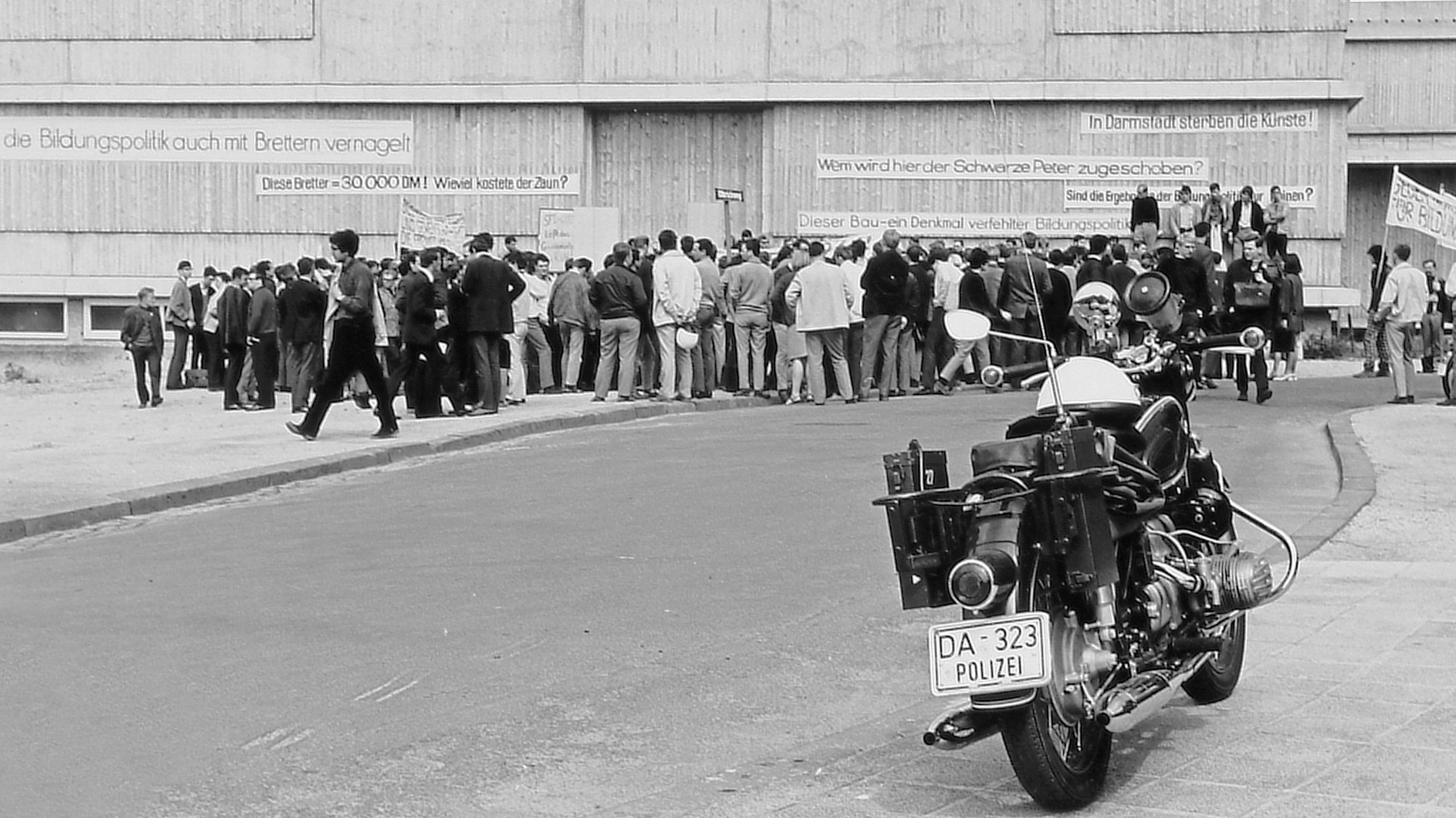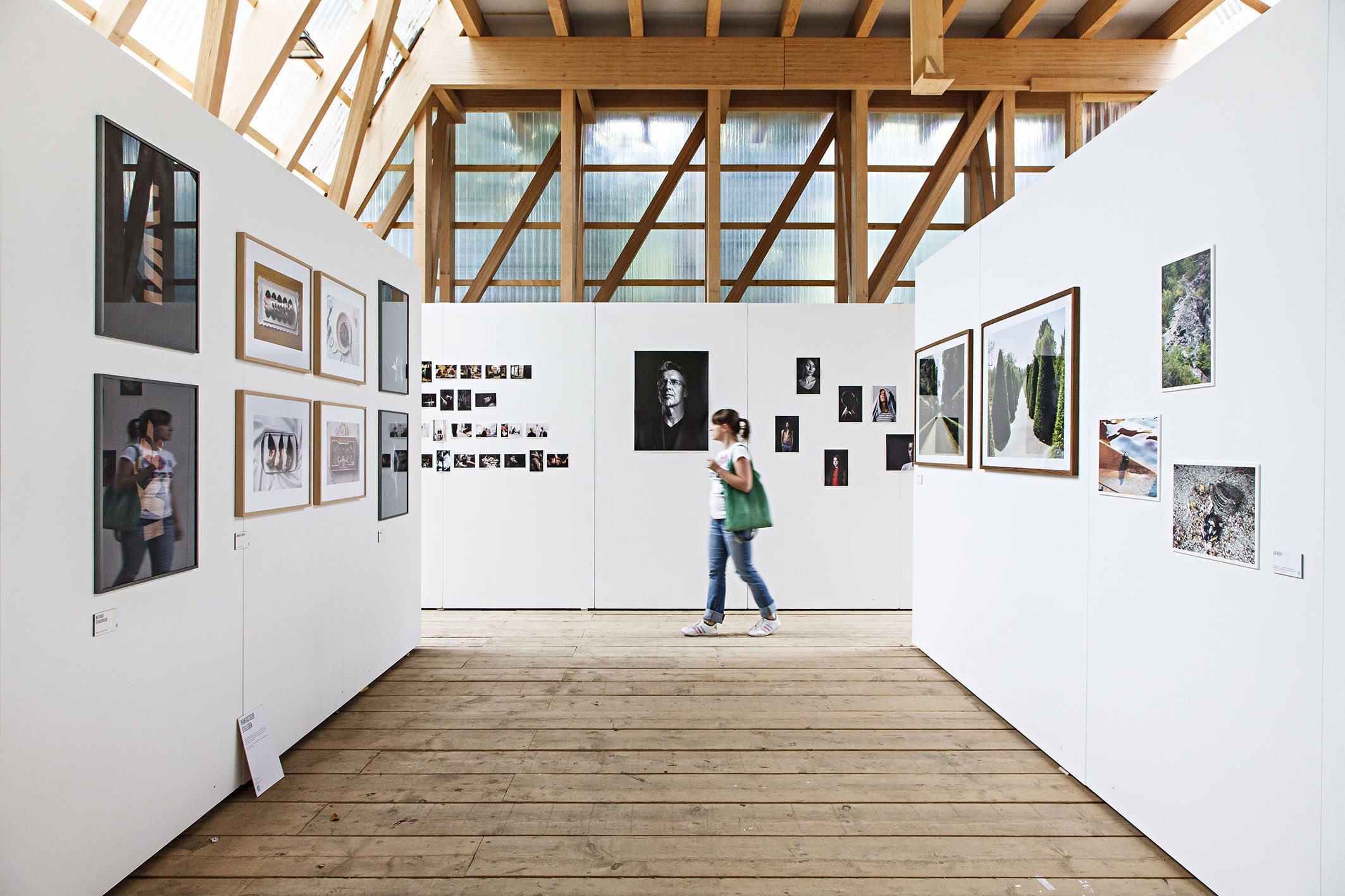Our history
More than 100 years of design education
The history of Darmstadt University of Applied Sciences
Design training at the Mathildenhöhe began in 1907, when the Darmstadt artists' colony set up its own training centre. In the period between the First and until the end of the Second World War, this area remained largely dormant. In 1946, the "Training Workshops for the Visual Arts" were established in Darmstadt, which were renamed "Werkkunstschule Darmstadt" in 1949. The school is housed in the Albin Müller studios, which we still use today. As part of a pilot scheme, the design school at Mathildenhöhe was continued in 1969 in accordance with the regulations of a university of design. In 1971, it became part of the newly founded Darmstadt University of Applied Sciences (now Darmstadt University of Applied Sciences) as a design department.
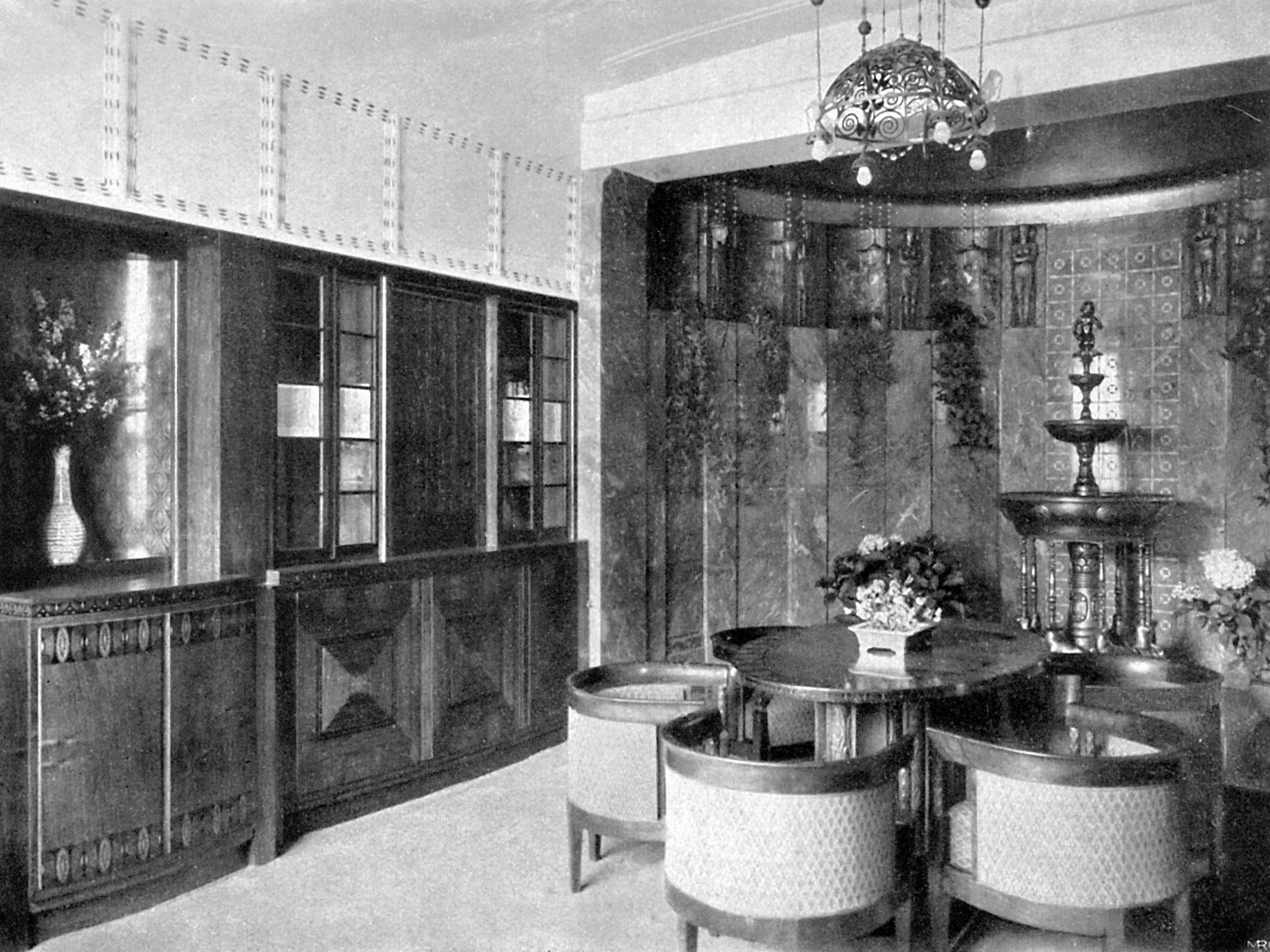
1899-1914
The roots of early modernism
In 1899, Grand Duke Ernst Ludwig founded the Darmstadt Artists' Colony with seven important representatives of Art Nouveau in order to utilise exemplary arts and crafts designs for the economic development of the region. Joseph Maria Olbrich quickly emerged as the head of the group. He is the only one who does not leave the artists' colony due to more attractive offers or disagreements.
In order to stem the constant turnover of artists, in 1906 the artists' colony appointed mainly members with teaching experience and set up teaching studios for applied arts, which opened on 1 January 1907. The four new members Albin Müller, Friedrich Wilhelm Kleukens, Ernst Riegel and Heinrich Jobst teach the main subjects.
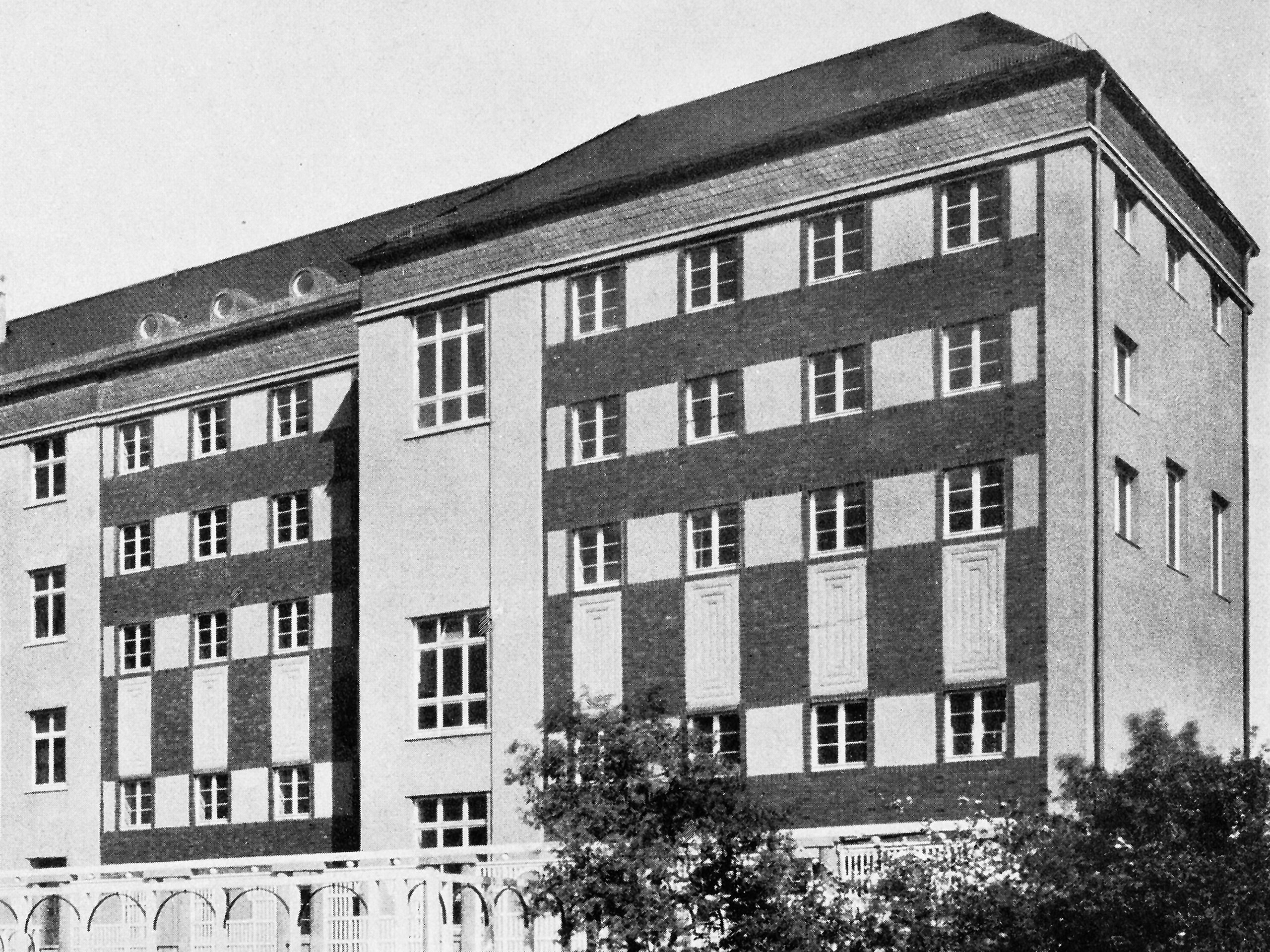
Olbrich, on the other hand, was exempted from teaching under the pretext that his workload was too heavy - in reality, he was extremely critical of the project of a school with a rigid curriculum.
His aim was to build the character of his pupils, to awaken their sense of social responsibility and to make them "strong and useful for life", which could only be realised in the training he had previously practised in the studio. In 1908, the new teaching institution took part in the Hessian State Exhibition at the Mathildenhöhe with its own room. But in 1910, the number of students drops so significantly that the teaching studios are closed again in the spring of 1911.
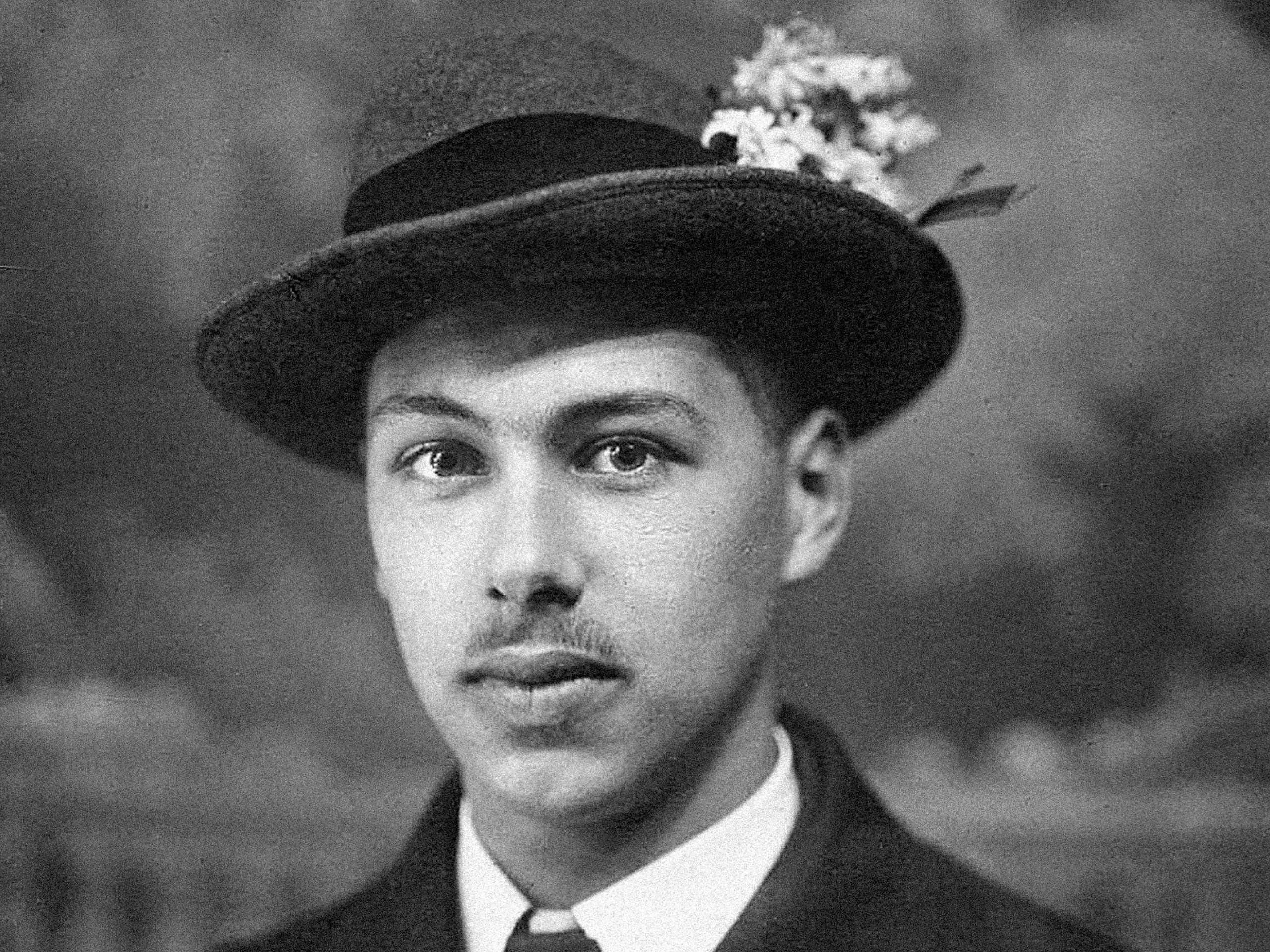 Herbert Bayer, 1918
Herbert Bayer, 19181918-1945
Between the world wars
In November 1918, Grand Duke Ernst Ludwig, founder of the artists' colony, is deposed. The Permanent Council for the Cultivation of Art in Hesse is founded in Darmstadt. Its task is to shape cultural policy under the changed social conditions after the First World War. The remaining members of the artists' colony also took on leading roles in the committee. However, all efforts to restore the arts and crafts to its former status failed: in 1919, another initiative was launched to bring together arts and crafts businesses with the remaining members of the colony - but the companies approached showed no interest.
The council's plans for a major arts and crafts exhibition in 1920 also failed due to a lack of commitment on the part of the entrepreneurs. However, individual apprentices continue to be trained in the studios of the remaining members of the artists' colony. For example, the now world-famous graphic artist Herbert Bayer, who later moved to the Bauhaus, was employed by Emanuel Josef Margold between 1919 and 1920.
The Darmstadt artists' colony was formally dissolved in 1929: Darmstadt's once important arts and crafts tradition was largely abandoned during the Third Reich. National Socialist policies merely marked the end of a development that began after the First World War and, due to the economic situation, led to the liberal arts taking over from the arts and crafts in Darmstadt in terms of cultural policy.
1946-1971
A new start for design training
After the Second World War, various initiators around the painter Paul Thesing dared to restart design training at the Mathildenhöhe: in February 1946, they installed "Training Workshops for the Visual Arts" - a first basic operation with a pragmatic programme. In 1949, the school joined the Arbeitsgemeinschaft deutscher Werkkunstschulen and was renamed Werkkunstschule Darmstadt.
Under Director Hans Hartl, who was appointed in 1951, an attractive development perspective emerged in 1954: the architect Karl Otto presented an ambitious concept for a Darmstadt "model school" with university status on behalf of the Minister of Culture and the recently founded Darmstadt Design Council. Close links with the Technical University were envisaged. However, these ambitious plans could not be realised due to personal quarrels surrounding Hans Hartl, but also due to the hesitant actions of the ministry. A huge opportunity was thus wasted.
In 1960, a new director was found for the Werkkunstschule: Friedrich Christoph Hüffner. He systematically expanded the school - new positions for photography, commercial art and typography were filled and initial plans were made for a film class. At the same time, Heinz Georg Pfaender succeeds in establishing the Industrial Design department as one of the few practical training centres for this field in Germany. Theoretical subjects such as political aesthetics and the sociology of art are added to the curriculum.
The school has thus finally shed its artistic past and presents itself as a modern design school - albeit without a clear status. Due to his autocratic style and unwillingness to reform, the lecturers and students withdrew their trust in Hüffner in 1969.
From the winter semester of 1969, the school was run as a model school with advance approval from the ministry according to the brand-new basic programme of a "University of Design", and consideration was also given to integrating it as an autonomous department within the Technical University. The president of the latter, Max Guther, who previously accompanied the fortunes of the HfG Ulm as city planning councillor, is very familiar with all the details of contemporary design education and supports the project.
Believing in a future comprehensive university, an inexperienced member of the state parliament calls for the Werkkunstschule to be incorporated into the newly formed university of applied sciences. However, in order not to make a later affiliation to the technical university more difficult, the Werkkunstschule should be transferred to an independent department with the necessary special features of the designer training programme (such as the entrance examination).
 Lecturers of the Department of Design in Darmstadt shortly before a group photo (from left to right: Heinz Habermann, Klaus Keller, Kurt Heldmann, Günter Hugo Magnus, Claus Schmid, Hans Gekeler, Alexander Carroux, Heinz Georg Pfaender), 1973
Lecturers of the Department of Design in Darmstadt shortly before a group photo (from left to right: Heinz Habermann, Klaus Keller, Kurt Heldmann, Günter Hugo Magnus, Claus Schmid, Hans Gekeler, Alexander Carroux, Heinz Georg Pfaender), 19731971-1990
A new profile
On 1 August 1971, the Department of Design is founded at Darmstadt University of Applied Sciences, with Heinz Habermann taking over as head.
The degree programme is geared towards the requirements of industry. The result is a three-course teaching programme with a focus on industrial design, communication design (graphics, photography, film) and interior design. The latter is later transferred to the Department of Architecture. In 1972, Habermann organised the exhibition "Gestalterische Grundlagen - Syntaktik" (Design Basics - Syntactics) in order to present the new profile to the outside world.
A complementary series of lectures on current problems in information theory and design science with prominent speakers such as Max Bense, Max Bill, Oskar Holweck, Wolfgang Metzger and Fritz Seitzdient serve to deepen and discuss the content.
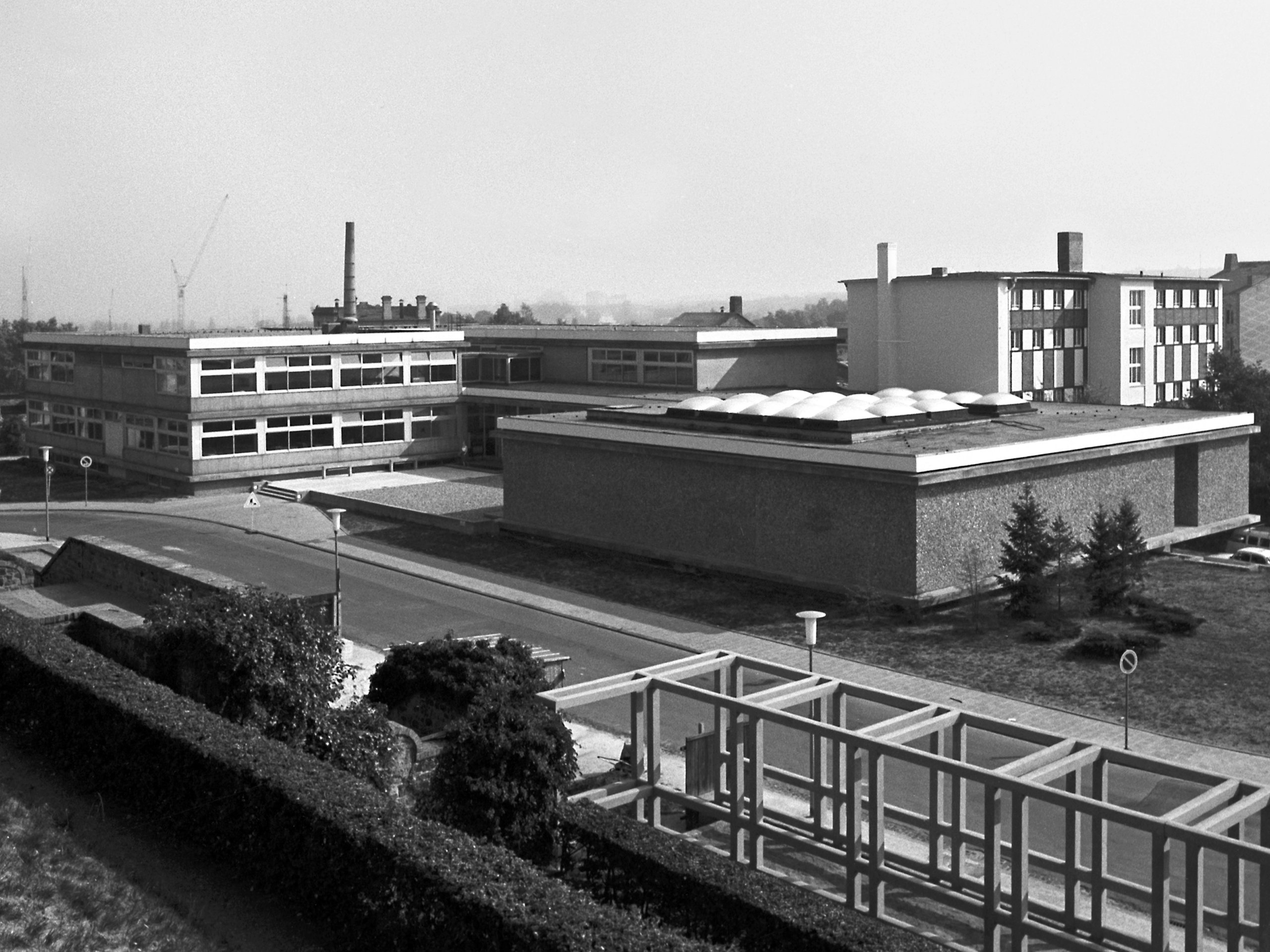 New building of the design faculty of Darmstadt University of Applied Sciences, 1971
New building of the design faculty of Darmstadt University of Applied Sciences, 1971When the festively staged anniversary show "A Document of German Art 1901-1976" is celebrated in the neighbouring exhibition building, the department exercises ironic modesty. Here, 'ordinary design' is on show. In the darkened auditorium, lined with black velvet, visitors are greeted by around 100 inconspicuous everyday objects gracefully displayed on individual steles under Plexiglas covers: a shuttlecock, a white plastic cup, a car licence plate. These are objects that have not been designed by famous designers and yet are perfectly integrated into everyday life - so perfectly that they are not even noticeable. The exhibition, which has been extremely well received by the press, is a powerful reminder that design should not be made for entrepreneurs or museums, but for everyone.
1990 until today
Diversity as an opportunity
In the recent past, the Department of Design has seen itself as a "colourful meadow" in the best sense of the word, with different teaching positions. The objective technocratic style that has been typical of Darmstadt in recent decades continues to be successfully cultivated. In November 1990, the symposium "Standpoints on Type and Typography" is held in collaboration with the Institute for New Technical Form. The main topic is the examination of the influence of computer technology on type design.
In conclusion, the lecturers' aim is to maintain a dialogue on new ways of seeing, attitudes and goals of design through such events. The focus on photography in the Communication Design degree programme is bearing particular fruit. Graduates initiate the now nationally renowned Darmstadt Photography Days, thereby underpinning the growing reputation of the training centre, which has had Barbara Klemm, an internationally renowned photographer, as an honorary professor in its ranks since 2000. After the turn of the millennium, more than half of the professorships in the Department of Design will be filled.
Excerpt from Kai Buchholz/Justus Theinert: Designlehren - Wege deutscher Gestaltungsausbildung In: Querschnitt. Contributions from Research and Development. 23 (2009). S. 94-111.
